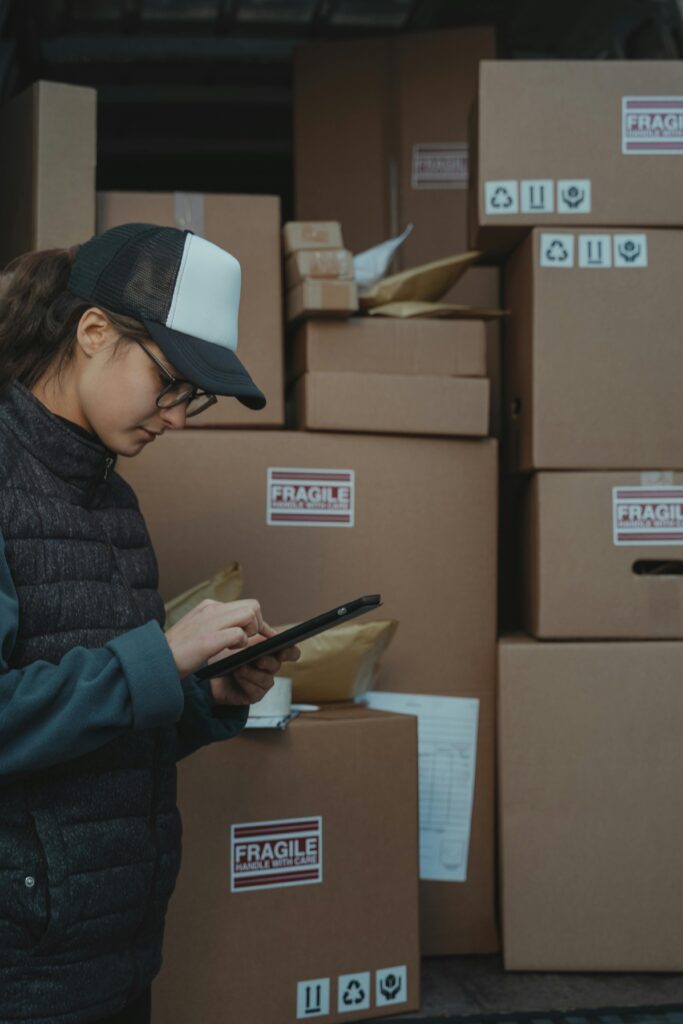Analyzing the Trump approach to International Trade.
While no one can foresee the future, Trump has thrown the word ‘Tariffs’ around a lot. We don’t know where exactly he will go with this but I have some strong suspicions. Read on to see my take, based on my years on analyzing the ebb and flow of import logistics and customs, on what the new presidential administration is likely to mean for the business and the consumer.
We’ll cover China imports, worldwide imports, the future of global trade, what to expect
regarding a shift of production to the US, and what’s ahead for ecommerce and our economy in general.
China – Tariffs Aplenty.
Theoretically speaking, the likelihood for tariffs to be imposed on China imports is great but is it going to cover all products made in China? I am fairly certain the answer is no. Some industries will get tariffs, yes; some that already have tariffs will get higher tariffs. For example, industries such as EV batteries already taxed at 50% will very likely see the 100% tariff.
On a practical level, I encourage all that are currently manufacturing products in China to stockpile for a couple of months if you have the cash reserves for it. You may even get your suppliers to agree to greater terms now that they know it’s about to get messy.
While no one is sure about tariff increases, it seems highly likely. Don’t be the one left paying taxes while your peers have inventory stockpiled. Shipping rates right now aren’t expensive. They will probably increase in the next two months but so far it is not expected to reach the exorbitant $20k range or anything close to it.
Another point to consider is that most new tariffs are imposed with a grace period. That would allow for any current production to be completed and imported before the new tariffs take effect. So don’t panic if you haven’t stocked up yet or don’t currently have the cash to do so.
World Imports – Fair Play.
While we have heard the term ‘Across the board tariffs’ bandied about by Trump, it’s unlikely that he’ll follow through with it.
USMCA (United States-Mexico-Canada Agreement) may be terminated, or not renewed when the renewal comes up (July 1 2026) but this is far from a Hawley Smoot Tariff Act of 1930 which backfired and caused massive inflation.
Tariffs across the board are not the reason why Trump is throwing around the tariff word so often. But, more about that later.
Port Strike – Pushed off the table.
We think the chance of the International Longshoremen’s Association (ILA) port strike on January 15 is minimal. Trump is not looking to destroy imports, nor is he looking to block automation. The Trump administration hype puts the ILA’s agenda at a great disadvantage at a time where all eyes are on imports and trade. The chance of America leaving the WTO (World Trade Organization) is on the table. The ILA does not have the leverage needed to pull off a strike that will bring the United States Maritime Alliance to commit to ZERO automation. Furthermore, Trump, the way we know him, will invoke the Taft Hartley Act (the labor management relations act) to get the ILA back to the negotiating table.

Future of Globalism – Towards a Fairer World Trade.
This is probably the biggest misconception about Trump’s agenda. The way the media narrates it, and what Trump is really after, is fair practices, protected intellectual property of US rights and a leveled playing field. But what does this mean?
Elon Musk in an interview with Joe Rogan has called this term specialization. This relates to what economists call Comparative Advantage and the concept is that countries or individuals should specialize in producing goods or services in which they have the lowest opportunity cost relative to others.
For example, the U.S. specializes in producing airplanes and software, where it has a lower opportunity cost. Mexico specializes in producing avocados and textiles, where it has a lower opportunity cost. By specializing and trading, the U.S. can obtain avocados from Mexico at a lower cost than if it grew them domestically, and Mexico can acquire airplanes from the U.S. at a lower cost than if it attempted to produce them.
However, if the U.S. were to focus on producing avocados instead, it would miss out on producing high-value high-tech goods. For Mexico, the opportunity cost of producing avocados or textiles is lower because it can do so efficiently with its available resources. If Mexico tried to produce airplanes, it would have to allocate resources away from its more efficient agricultural and manufacturing sectors.
This trade allows both countries to consume a broader array of goods at lower prices, maximizing their economic welfare.
Now with this in mind, look at one of the Trump Administration’s 2019 demands – the 200B of exports to China consisting of soy beans, corn, and meat which China initially agreed to thus avoiding the 4th tariff and getting the 3d tariff down to 7.5%.
It is fair to assume that Trump is approaching this with the same mindset. Imports are great as long as it protects the interests of the US consumer and more importantly the US business.
For goods that can be manufactured in China at a lesser opportunity cost, we would want to source that from China. For example labor-intensive products. Also, this all works as long as China trades with us on what we have at a lower opportunity cost, or as long as China does not dump the market value for goods that will put US businesses out of business.
This will be the case with India, Malaysia, EU and UK and so on. Will there be higher tariffs? Probably.
But not across the board, and not for products that are at a lower opportunity cost.
Ecommerce – Protecting US Interests.
What will Trump’s policies mean for the ecommerce sector? The ecommerce sector has fallen victim in a big way to Chinese adversaries, whether its Temu and Shein or China-based Amazon sellers, not to mention the latest announcement by Amazon of launching its own low cost store with 11 days transit for products valued at $20 or less.
On the one hand, the Chinese have exploited the Section 321 loophole that I have written about extensively. If and when tariffs increase, this will put the US businesses at a greater disadvantage since the Chinese still succeed in avoiding paying any tariffs whatsoever whereas US businesses will now (potentially) going to be subject to 60% tariffs.
On the other hand, Trump will have none of that. It is Trump that threatened to withdraw from the Universal Postal Union (UPU) system when they allowed Chinese sellers to ship for a cheaper rate than US businesses could. This was back in October of 2018.
Donald Trump is a man of action and will not rest until he has secured fair trade for the USA. So I am positive that drastic action will be taken on the Section 321 loophole. If only he would listen to me and stop it altogether 😉
Whatever measures he will take, I hope it will not be too little too late. Shein is currently setting up shop here in the USA and Temu is already shipping many orders from within our borders.
Economy – Recalibrate for the Greater Good
Does tariff cause inflation? this is the biggest question asked around a lot. The policies Trump stands for and had in place boosts our economy. While this paper does not serve as an economic review but rather a logistics review, I can say this: It is far worse to have a bad economy even if it comes along with no tariffs. and it is far better to have a great economy even if it means more tariffs. Tariffs do not hinder the economy, rather they adjust it.
US Manufacturing – Not Our Strong Point
Oh, I almost forgot. Are we going to become a manufacturing hub all over again?
That’s what JD Vance said in a couple of interviews. I personally do not buy it. I think the US is at a position where it will lose out more if it starts manufacturing on its own rather than trading with multiple countries (evenly and fairly) and being good at what they do (aircraft and tech).
But this is just my feeling; let’s get technical for a minute.
Whatever your personal opinions are, if we are moving towards a more protectionist place where we are eliminating international trade and becoming self-reliant, there are two things to monitor and be mindful of:
The factories overseas have invested a great deal in infrastructure, machinery, personnel and training procedures. They will not give up their investment easily. They are at a far greater advantage in setting up shop in the US if the tide turns. So the first thing happening if they so much as smell a hefty tariff and a protectionist agenda is to move or expand their production to the USA and have their personnel come and train US workers in the running of their plant while raking in the profits. Good for them, if that works for them. Just be aware.
The other thing US businesses will do is limit the US-based manufacturing of goods up to the last and most minimal part of the process – such as parts assembly, or adding final components. Raw material will be imported from overseas in the most advanced form possible so that the reliance on US factories will be minimal.
One of the things this will require is many Free Trade Zones (FTZ) and bonded warehouses to hold goods and complete the assembly there. That way, when they withdraw it from the warehouse, it is pronounced ‘Made in the USA’ and there are no tariffs to pay!
A sure win?
Guys, let’s invest in FTZ’s.
What are your thoughts?





